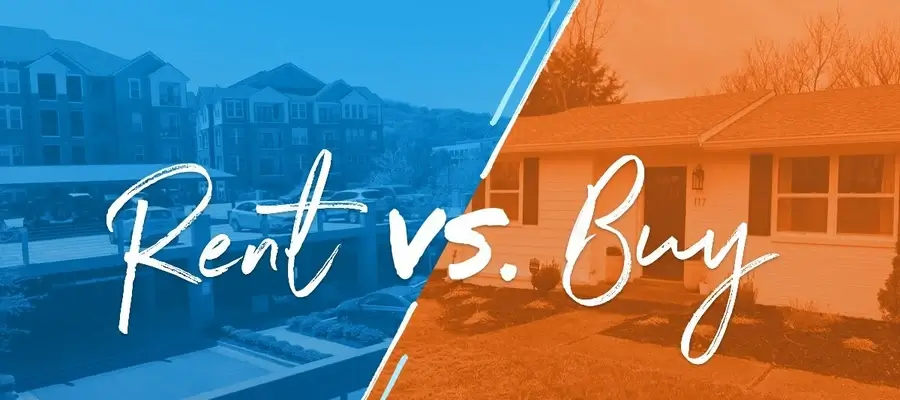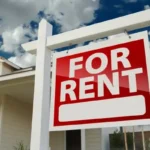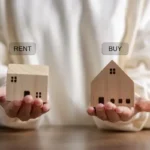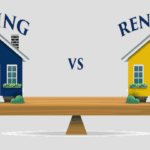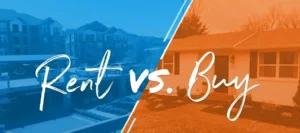It used to be simple: you rented until you were ready to buy. But in 2025, that timeline has hit a wall for many Americans. The dream of owning a home—once seen as a natural step in adulthood—is drifting further out of reach. One key reason? A growing gap in income needed to buy vs. rent.
A recent analysis by Redfin revealed a jarring reality: you now need to earn around $116,600 annually to afford the median-priced home in the U.S. That’s roughly $50,000 more than what’s required to afford renting the average apartment.
And perhaps more telling? Just a few years ago, that income gap was only about 17%. Now, it’s 81%.
So, what happened—and what does it mean for renters hoping to buy?
In this Article
The New Math of Homeownership
Let’s break it down. As of spring 2025:
- Median home price: ~$424,000
- 30-year mortgage rate: ~6.5%
- Monthly mortgage payment (with 20% down): ~$2,800 (including taxes/insurance)
- Required annual income to afford that: $116,600
- Median U.S. household income: ~$86,000
- Typical rent for a 2-bedroom apartment: ~$1,795
- Required income to afford rent: ~$64,500
These figures aren’t theoretical. They’re playing out in real time for millions of families.
While rents have plateaued thanks to a wave of new apartment construction, home prices and borrowing costs have surged. That double whammy—high prices and high interest rates—is forcing many would-be buyers to press pause, even if they feel “ready” to buy.
“We Were Finally Ready… Until the Math Kicked In”
For a lot of renters, the decision to stay put isn’t about fear—it’s about affordability.
“We’ve got great credit, no debt, and $30K saved,” says Jasmine, a 34-year-old teacher in North Carolina. “But once we factored in property taxes and interest, our payment was almost double our rent.”
And she’s not alone.
Even households earning above the national median are feeling squeezed. Especially in cities where the cost of homes has outpaced income growth by wide margins—think Phoenix, Austin, Denver, and even suburban stretches of the Midwest.
Renting vs. Owning in 2025
| Category | Renting (Avg. Apt) | Owning (Median Home) |
|---|---|---|
| Monthly Cost (est.) | $1,795 | $2,800 |
| Annual Cost | $21,540 | $33,600 |
| Income Needed (3x rent) | $64,500 | $116,600 |
| Upfront Cost | First month + deposit (~$3,000) | Down payment + closing (~$60,000) |
| Flexibility | High | Low (selling = months) |
| Equity Building | No | Yes |
| Average U.S. Credit Score Required | 620+ | 680–740+ |
| Typical Time to Qualify | 1–3 days | 3–5 weeks |
The Lock-In Effect on Sellers—and Buyers
Another part of this problem is hidden in plain sight: people who already own homes aren’t selling.
Why would they? Millions of homeowners refinanced into 2–3% mortgage rates during the pandemic. To move now would mean trading a $1,400 monthly payment for something closer to $2,800. That’s a hard sell, even if your home’s equity has doubled.
This “lock-in” phenomenon is choking inventory and pushing home prices higher due to low supply—even as buyer demand has cooled.
Rents Stabilize, But the Path to Ownership Gets Harder
Here’s where it gets interesting. Despite rising prices in many areas, rents have actually stabilized or declined in some markets.
Why? A wave of multifamily construction from 2022–2024 is now hitting the market. Cities like Dallas, Atlanta, and Charlotte are seeing record-high apartment openings, and landlords are competing for tenants with free months, reduced deposits, and more.
That boom in rental supply is helping keep rent affordable, even as homeownership slips further away.
But there’s a catch: it’s not making it easier to save for a home.
If rent is now “affordable” at ~$1,700–1,900/month, that doesn’t leave a lot of room for most families to stash away a 5% or 10% down payment—especially with inflation still eating into everyday expenses like groceries, healthcare, and child care.
Why This Matters More Than Ever
This widening gap isn’t just an inconvenience. It’s a structural shift with deep long-term consequences.
1. Wealth inequality grows. Homeownership is the #1 way most Americans build wealth. As fewer households can buy, wealth increasingly gets concentrated among existing owners—and passed down generationally. First-time buyers without family help? Left behind.
2. Mobility slows. If people can’t afford to buy, they stay where they are. That affects jobs, schools, and regional economies. Employers may find it harder to attract workers to high-cost cities.
3. The American Dream erodes. Homeownership used to represent stability, achievement, and control over your space. Without access to it, many feel like the “dream” is reserved only for the wealthy or lucky.
Who Can Still Buy Right Now?
Despite all this, people are still buying. So who are they?
- Older, equity-rich buyers (Baby Boomers downsizing or relocating)
- Dual-income households earning over $125K/year
- Buyers using VA loans or down payment assistance
- Cash buyers, especially in the Sun Belt and Midwest
For those who don’t fall into those categories, though, it’s tough sledding.
Tips for Renters Trying to Break Through
If you’re trying to bridge the gap and buy a home in the next 12–24 months, here are a few realistic strategies:
1. Look beyond the metro core
Search for neighborhoods just outside city centers. You’ll often find better price-per-square-foot and fewer bidding wars.
2. Get pre-approved now
Even if you’re not buying yet, knowing your real borrowing power helps you plan more effectively. Lenders can also flag local programs for first-time buyers. Get pre-approved for a mortgage by filling out our form.
3. Use layered financing
Down payment assistance, grant programs, or VA loans (for veterans) can help bridge affordability gaps without needing 20% down.
4. Consider co-buying
Some buyers are teaming up with friends, siblings, or parents to qualify. It’s not traditional—but it’s becoming more common.
5. Focus on the starter
Don’t wait for your dream home. A smaller or less-updated home in a solid location can build equity—and act as a stepping stone.
Will the Gap Close Anytime Soon?
Honestly? Probably not fast.
Mortgage rates are expected to stay in the 6–6.75% range through much of 2025. And while home prices are no longer spiking, they’re not falling much either. Without a major drop in rates—or a surge in income—the math will remain tough.
However, if you’re renting right now, that doesn’t mean you’re failing. In many cases, renting is the smarter short-term financial choice. It allows flexibility, helps avoid inflated payments, and gives you time to save or wait for better conditions.
What matters most is having a plan—and knowing that the gap, while daunting, isn’t necessarily permanent.
Final Thoughts: A Time to Rethink
There’s no sugarcoating it—buying a home in 2025 is harder than it’s been in decades. But with creativity, patience, and the right strategy, it’s not impossible.
We’re in a transitional moment. Renters are rethinking what homeownership means. Markets are adjusting. And policymakers are (slowly) paying attention to affordability.
Whether you’re renting by necessity or choice, one thing is clear: You’re not alone—and you’re not falling behind. The housing market is changing. The path may be longer now, but for many, homeownership is still worth walking toward.
Frequently Asked Questions
What is the current income needed to afford a median-priced home in 2025?
As of spring 2025, buyers need to earn around $116,600 annually to afford the median-priced U.S. home, which is approximately $424,000.
How much income is needed to rent the average apartment in 2025?
Renters need an annual income of about $64,500 to comfortably afford the average U.S. apartment, typically renting for around $1,795 per month.
Why is there such a large gap between owning and renting in 2025?
The income gap is largely due to high mortgage rates (around 6.5%) combined with rising home prices, while rent growth has slowed thanks to a boom in apartment construction.
What was the income gap between owning and renting just a few years ago?
Only a few years ago, the income needed to own a home was about 17% more than renting. That gap has now grown to 81% in 2025.
Is renting cheaper than owning in 2025?
Yes, in nearly every market, renting is significantly cheaper than buying a home. In some cases, the monthly cost to own is nearly double the cost to rent.
Why aren’t more people selling their homes to increase inventory?
Many homeowners are locked into ultra-low mortgage rates from 2020–2021. Selling now would mean giving up their 2–3% rates for a 6.5% mortgage, which discourages them from listing their homes.
Are rents increasing as fast as home prices in 2025?
No. Rents have stabilized in many cities due to a surge in new apartment supply. Meanwhile, home prices have remained high and borrowing costs have increased.
What can first-time buyers do to bridge the income gap?
First-time buyers can explore down payment assistance programs, VA loans, co-buying with family, or look in outer suburbs where homes are more affordable.
Is now a good time to buy or rent?
It depends on your finances and long-term plans. For many households, renting is currently the more affordable and flexible option, especially with high mortgage rates and tight credit standards.
Will the income gap between renting and buying close soon?
Probably not in the short term. Without major changes in mortgage rates, home prices, or income levels, the gap is expected to remain wide throughout 2025.


